Eduard von Borsody was an Austrian cameraman, film editor, film director, and screenplay writer.
Hans Paetsch was a German actor. He appeared in 52 films between 1939 and 2002. He is most notable for his voice acting, especially as a narrator of fairy tales and audio dramas.
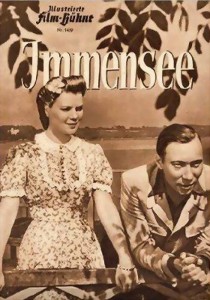
Immensee: ein deutsches Volkslied is a German film melodrama of the Nazi era, directed in 1943 by Veit Harlan and loosely based on the popular novella Immensee (1849) by Theodor Storm. It was a commercial success and, with its theme of a woman remaining faithful to her husband, was important in raising the morale of German forces; it remained popular after World War II.
The Ernst Busch Academy of Dramatic Arts, located in the Niederschöneweide district of Berlin, Germany, was founded in 1951 as the National Theatre School in Berlin with the status of college. In 1981, it was granted university status, and a year later it was renamed after the singer and East German actor Ernst Busch.
Carl Raddatz was a German stage and film actor. Raddatz was a leading man of German cinema during the Nazi era appearing in a number of propaganda films and romances. Later in his career he developed a reputation for playing benevolent father figures.
The Prince of Rogues is a 1928 German silent drama film directed by Curtis Bernhardt and starring Hans Stüwe, Lissy Arna and Albert Steinrück. It was shot at the Johannisthal Studios in Berlin. The film's art direction was by Heinrich Richter. The story depicts the life of the 18th century outlaw Schinderhannes. It is based on a 1927 play Schinderhannes by Carl Zuckmayer.
Hannes Stelzer was an Austrian film actor. Stelzer was a leading actor in German cinema during the Nazi era.
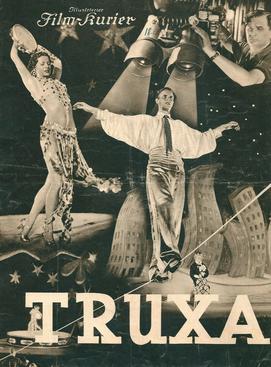
Truxa is a 1937 German drama film directed by Hans H. Zerlett and starring La Jana, Hannes Stelzer, and Ernst Fritz Fürbringer. It is a Circus film, based on a novel by Heinrich Seiler. The film was released in the United States and was one of the most successful German films show in America that year.

Trouble Backstairs is a 1935 German romantic comedy film directed by Veit Harlan and starring Henny Porten, Else Elster and Rotraut Richter. It marked the directoral debut of Harlan, who had previously worked as an actor, and quickly developed as a leading director of Nazi Germany. It was based on a play by Maximilian Böttcher, and was remade in 1949.
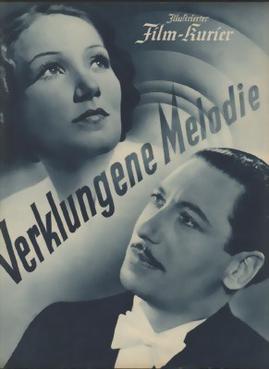
Faded Melody is a 1938 German drama film directed by Viktor Tourjansky and starring Brigitte Horney, Willy Birgel and Carl Raddatz. The film was made by Germany's largest studio of the era UFA. It was shot at the Babelsberg Studios in Potsdam and on location in French Algeria, New York City and Berlin. The film's sets were designed by the art directors Hermann Asmus and Max Mellin. It premiered at Berlin's Gloria-Palast.

Venus on Trial is a 1941 German drama film directed by Hans H. Zerlett and starring Hannes Stelzer, Hansi Knoteck, and Paul Dahlke. The film was part of the Nazis' campaign against 'degenerate art', and depicts the trial of a young artist who has resisted the trend towards it.

Above All Else in the World is a 1941 German drama film directed by Karl Ritter and starring Paul Hartmann, Hannes Stelzer and Fritz Kampers. The title refers to the second line of the German national anthem. It was made as a propaganda film designed to promote Nazi Germany's war aims in the Second World War.
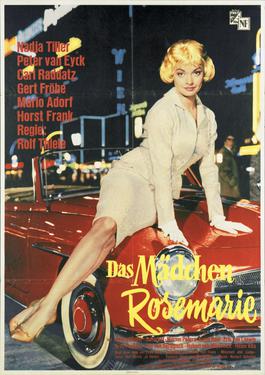
Rosemary is a 1958 West German drama film directed by Rolf Thiele and starring Nadja Tiller, Peter van Eyck, and Carl Raddatz. The film portrays the scandal that surrounded Rosemarie Nitribitt. Thiele made a second film about Nitribitt, Rosemary's Daughter, which was released in 1976.
This list details notable events that occurred in 2016 in Germany.
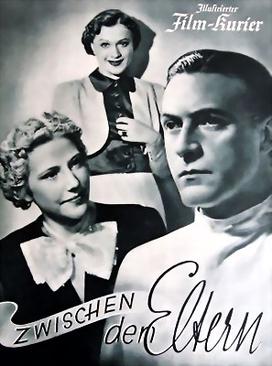
Between the Parents is a 1938 German drama film directed by Hans Hinrich and starring Willy Fritsch, Jutta Freybe, and Gusti Huber. It was shot at the Babelsberg Studios in Potsdam. The film's sets were designed by the art directors Wilhelm Depenau and Ludwig Reiber.

Regine is a 1935 German drama film directed by Erich Waschneck and starring Luise Ullrich, Anton Walbrook and Olga Chekhova. It was shot at the Grunewald Studios in Berlin. The film's sets were designed by Otto Erdmann and Hans Sohnle.
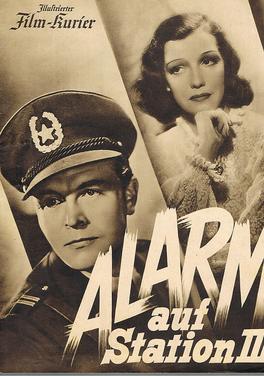
Alarm at Station III is a 1939 German crime film directed by Philipp Lothar Mayring and starring Gustav Fröhlich, Jutta Freybe and Kirsten Heiberg. It is set in a Scandinavian country with Prohibition.
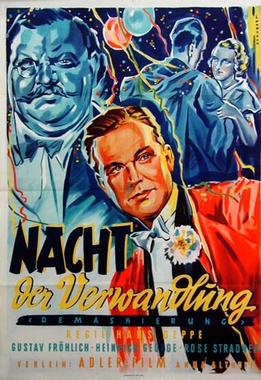
A Night of Change is a 1935 German drama film directed by Hans Deppe and starring Gustav Fröhlich, Heinrich George, and Rose Stradner. It was made at the Grunewald Studios in Berlin. The film's sets were designed by the art director Fritz Maurischat and Karl Weber.

Detours to Happiness is a 1939 German drama film directed by Fritz Peter Buch and starring Ewald Balser, Lil Dagover and Viktor Staal. It was shot at the Tempelhof Studios in Berlin and on location in Kitzbühel in the Tyrol in annexed Austria. The film's sets were designed by the art directors Wilhelm Depenau and Ludwig Reiber. It was distributed by UFA, Germany's largest film company of the era.

A Wife for Three Days is a 1944 German romantic drama film directed by Fritz Kirchhoff and starring Hannelore Schroth, Carl Raddatz and Ursula Herking. It was shot at the Babelsberg Studios in Potsdam and on location around Berlin and its vicinity including the River Havel and Wannsee. Filming also took place in Salzburg and Mondsee in Austria. The film's sets were designed by the art director Erich Kettelhut.













